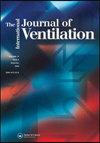个性化通气对降低长期护理机构空气传播感染风险的有效性
IF 1.5
4区 工程技术
Q3 CONSTRUCTION & BUILDING TECHNOLOGY
引用次数: 1
摘要
纵观历史,人类曾经历过重大的传染病爆发。2019年12月,以前未知的SARS-CoV-2病毒出现,在全球产生了巨大影响。长期护理机构(ltcf)的居民由于身体虚弱,极易受到感染。COVID-19等呼吸道传染病可通过空气传播途径在他人之间传播。这是由于共用同一个室内环境造成的。为了减少通过空气传播途径感染的风险,重要的是要考虑通风和其他建筑服务系统措施,包括个性化通风(PV)。光伏有可能成为ltcf的合适解决方案,因为它仍然可以允许居民和访客在公共休息室之间进行互动,这从心理健康的角度来看是非常重要的。为了确定PV在感染风险背景下的潜力,进行了实验室实验,研究其在降低感染风险方面的有效性。这项研究是在一个可控的气候室中进行的。在实验中,一个人被模拟并放置在提供过滤再循环空气的PV系统附近。微粒源使室内的微粒浓度保持恒定。光伏系统的性能通过呼吸区附近的颗粒浓度与室内浓度的比较来衡量。研究了几个设计参数。将结果转化为有效(等效)通气量,应用Wells-Riley方程确定感染风险。结果表明,在这个实验室环境中,PV系统可以将感染风险降低50%。其性能受送风头到呼吸区的距离、送风头的角度、室内气流和颗粒源位置等因素的影响。为了进一步优化系统并允许其在ltcf中应用,还有几个方面需要进一步关注,例如人员的移动性/放置,用户的呼吸模式以及影响舒适度和使用的因素。©2023作者。由Informa UK Limited出版,以Taylor & Francis Group的名义进行交易。本文章由计算机程序翻译,如有差异,请以英文原文为准。
Effectiveness of personalized ventilation in reducing airborne infection risk for long-term care facilities
Throughout history, the human population has experienced major outbreaks of infectious diseases. In December 2019 the previously unknown SARS-CoV-2 virus emerged, which had a huge impact globally. Residents of long- term care facilities (LTCFs) showed to be highly susceptible to infection due to their frailty. Respiratory infectious diseases, such as COVID-19, can spread among others via the airborne transmission route. This is caused by sharing the same indoor environment. To reduce the risk of infection via the airborne route, it is important to consider ventilation and other building services system measures, including personalized ventilation (PV). PV has the potential of being a suitable solution for LTCFs, as it could still allow interaction between residents and visitors in the common rooms, which is regarded very important from a mental health perspective. To identify the potential of PV in the context of infection risk, a laboratory experiment was conducted to investigate its effectiveness on the infection risk reduction. The research was performed in a controlled climate chamber. In the experiment a person was mimicked and positioned close to a PV system that provided filtered recirculated air. A particle source maintained a constant particle concentration in the room. The performance of the PV system was measured through the particle concentration near the breathing zone as compared to the room concentration. Several design parameters were investigated. Translating the outcomes to a fictive (equivalent) ventilation rate, the Wells-Riley equation was applied to determine the infection risk. The outcomes indicated that, in this laboratory setting, the PV system can reduce the risk of an infection up to 50%. The performance is affected by the distance of the supply head to the breathing zone, the angle of the supply head, airflows in the room and the location of the particle source. To further optimize the system and allow its application in LTCFs, several aspects still need further attention, such as mobility/placing the person, the breathing pattern of the user and factors influencing the comfort and use. © 2023 The Author(s). Published by Informa UK Limited, trading as Taylor & Francis Group.
求助全文
通过发布文献求助,成功后即可免费获取论文全文。
去求助
来源期刊

International Journal of Ventilation
CONSTRUCTION & BUILDING TECHNOLOGY-ENERGY & FUELS
CiteScore
3.50
自引率
6.70%
发文量
7
审稿时长
>12 weeks
期刊介绍:
This is a peer reviewed journal aimed at providing the latest information on research and application.
Topics include:
• New ideas concerned with the development or application of ventilation;
• Validated case studies demonstrating the performance of ventilation strategies;
• Information on needs and solutions for specific building types including: offices, dwellings, schools, hospitals, parking garages, urban buildings and recreational buildings etc;
• Developments in numerical methods;
• Measurement techniques;
• Related issues in which the impact of ventilation plays an important role (e.g. the interaction of ventilation with air quality, health and comfort);
• Energy issues related to ventilation (e.g. low energy systems, ventilation heating and cooling loss);
• Driving forces (weather data, fan performance etc).
 求助内容:
求助内容: 应助结果提醒方式:
应助结果提醒方式:


